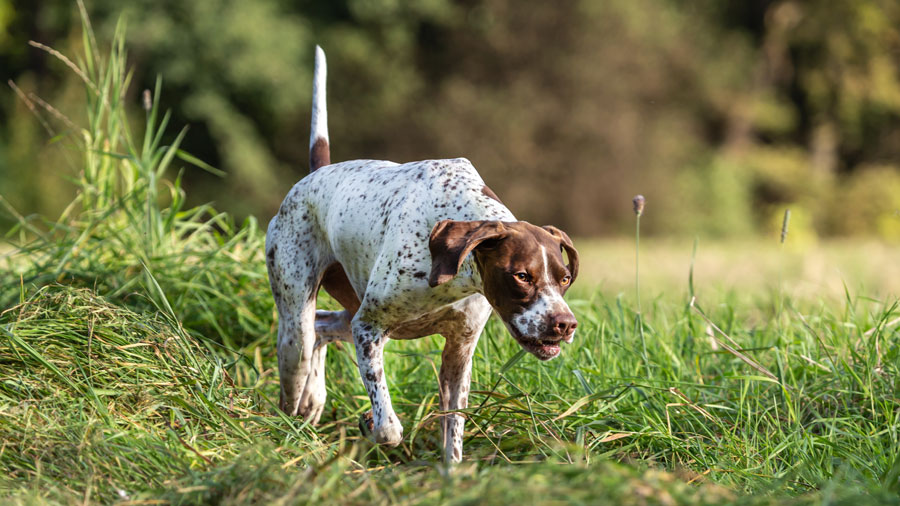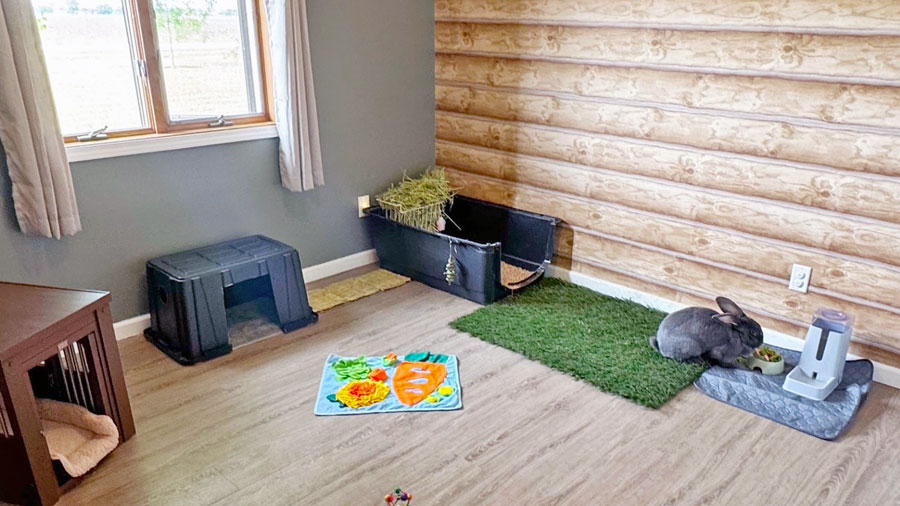Approach May Aid Chronic or Non-healing Wounds
A treatment approach that has been in practice in human medicine for decades is now offered for dogs at the University of Illinois Veterinary Teaching Hospital in Urbana.
Dr. Tisha Harper, a veterinary surgeon who specializes in orthopedics and physical rehabilitation therapy, says platelet-rich plasma joins a host of treatment options—ranging from surgery to rehab to pain medications—for conditions such as osteoarthritis in dogs.
“Every care plan is tailored individually to the patient,” she says. “Just as with human patients, what might work well for one pet may not necessarily be the best thing for another pet. We explore many options when choosing the best treatment for each individual case.”
What Is Platelet-Rich Plasma?
![[Dr. Tisha Harper and dog]](https://vetmed.illinois.edu/wp-content/uploads/2021/04/pc-harper-exam.jpg) Plasma is the liquid within which the other components of blood, such as red blood cells and platelets, are suspended. It is mostly comprised of water. Platelets are small fragments of cells that play a role in the blood clotting process and also promote healing.
Plasma is the liquid within which the other components of blood, such as red blood cells and platelets, are suspended. It is mostly comprised of water. Platelets are small fragments of cells that play a role in the blood clotting process and also promote healing.
Platelet-rich plasma (PRP) is derived from the patient’s own blood. Veterinarians process the plasma so that it has a higher-than-usual concentration of platelets. “The plasma contains growth factors and proteins that may accelerate the healing of tendons and ligaments and may promote regeneration of cartilage or bone,” says Dr. Harper.
PRP injections can decrease pain associated with arthritis by reducing inflammation in the joints. They may also help tendon or ligament injuries heal. Patients with chronic, slow, or non-healing wounds may also benefit from PRP.
What Is the PRP Process?
Platelet-rich plasma is prepared by drawing blood from the patient. The amount of blood is dependent on how big the dog is and how severe the injury is. Once the blood is drawn, it is either filtered in order to capture the platelets, or it is centrifuged in order to separate the plasma from the erythrocytes. Both of these processes will provide the veterinarian with plasma that contains all the necessary elements.
This treatment usually takes 30 to 40 minutes to complete. It is something that can be done at your veterinarian’s office in one day. For many patients, platelet-rich plasma is a one-time treatment; some patients, however, may need additional treatments. After a patient is treated with PRP, it may be necessary to restrict movement, but only for a couple of days. Afterward, there are no restrictions on movement or activity.
Don’t Overlook Osteoarthritis
Often, dog owners miss cues that indicate their pets may have arthritis.
“It’s easy to think that pets naturally slow down as they get older,” says Dr. Harper. And while that may be true, she points out that the underlying problem may be osteoarthritis. “More often than not, our pets slow down due to painful arthritic joints,” she says.
Younger pets also suffer from osteoarthritis. For this reason, pet owners should be vigilant about noticing changes in their pet’s behavior and how the pet moves around. Luckily, whether the dog is young or old, treatments are available to improve the quality of life in pets with joint or lameness issues. In addition to PRP, surgical treatment, weight loss, physical rehabilitation therapy, laser therapy, and simple pain relief medications can be effective options depending on the individual patient.
“Whatever approach is selected, pet owners need to be consistent and diligent about carrying out the recommended protocol in order for it to benefit their pet,” says Dr. Harper. The rehabilitation process depends on consistency in the treatments.
If you have any concerns about the orthopedic health of your pet, see your local veterinarian to discuss treatment options.
By Hanna Netisingha

![[Dr. Tisha Harper gives an orthopedia exam to a dog]](https://vetmed.illinois.edu/wp-content/uploads/2021/04/pc-harper-prp.jpg)


